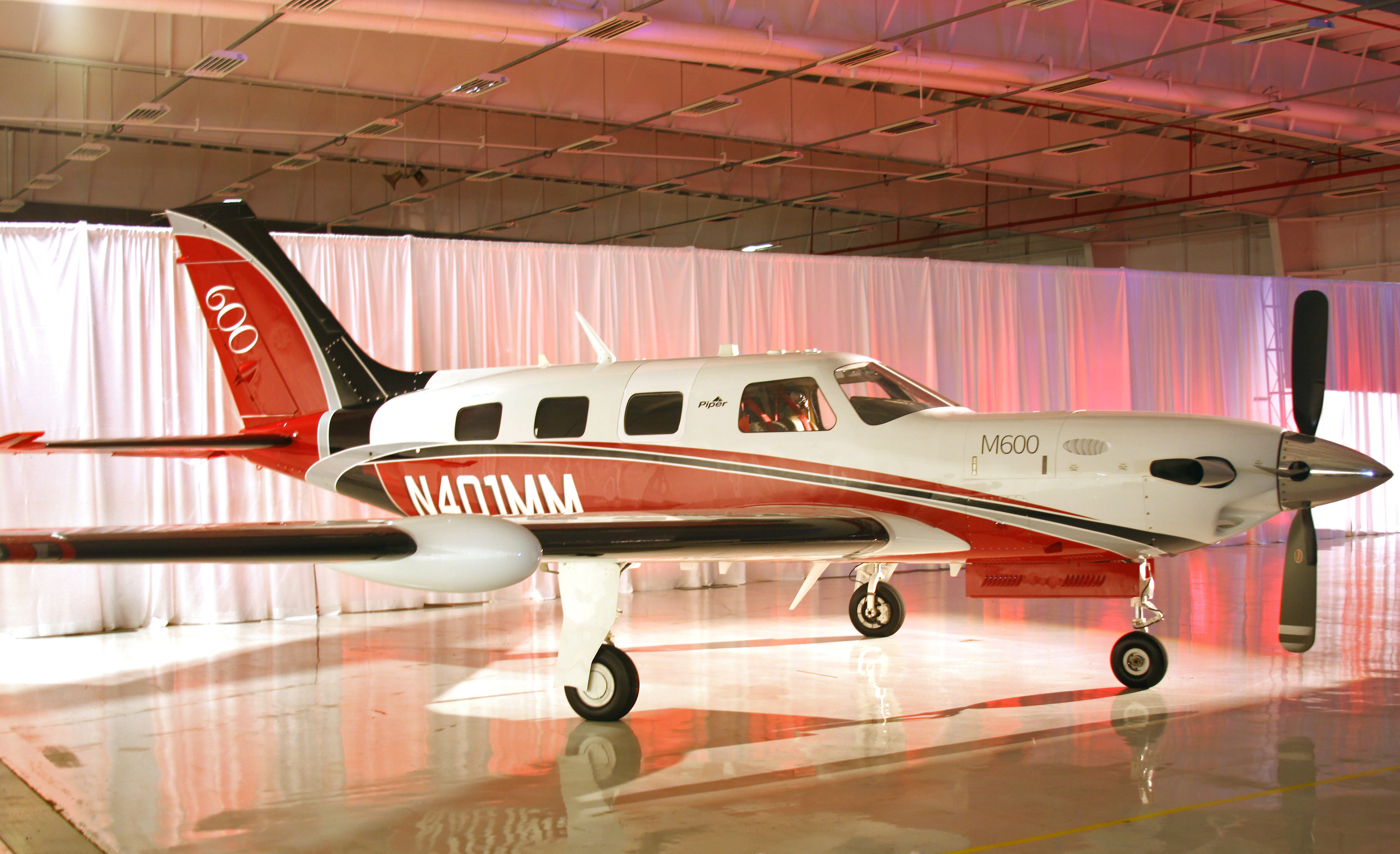Piper M600 earns FAA type certification
“We hit the ball out of the park,” Piper President and CEO Simon Caldecott told 700 guests gathered for the presentation, which was broadcast via a live Facebook video feed. A large screen detailed the aircraft’s construction process while a red, white, and black example of the new turboprop occupied a prominent spot on the hangar floor. FAA representative Eric Wright presented Caldecott with the type certificate in front of community leaders, aircraft dealers, suppliers, and employees, who clapped and cheered when the document was handed over.
 Caldecott told AOPA the type certificate was "a major milestone for Piper," and he thanked the company's employees, which he said were the key to the program's success. Employees filling the hangar wore specially printed black-and-orange shirts saluting the M600's certification milestone. After the ceremony they were treated to a barbecue lunch and presented a thank you card from Caldecott, which read in part, "Without your hard work and dedication, the M600 wouldn't have been possible and I want to thank you personally for a job well done!"
Caldecott told AOPA the type certificate was "a major milestone for Piper," and he thanked the company's employees, which he said were the key to the program's success. Employees filling the hangar wore specially printed black-and-orange shirts saluting the M600's certification milestone. After the ceremony they were treated to a barbecue lunch and presented a thank you card from Caldecott, which read in part, "Without your hard work and dedication, the M600 wouldn't have been possible and I want to thank you personally for a job well done!"
He also recognized Piper's suppliers Pratt & Whitney Canada, Hartzell Propeller, and Garmin, for their contributions to the turboprop's performance "which exceeded our own expectations" and for the aircraft's state-of-the-art avionics.
The six-seat M600, powered by a 600-shaft-horsepower flat-rated Pratt and Whitney PT6A-42A turboprop engine, takes its place as “the most advanced and capable aircraft in Piper’s M-class line up.” It has a maximum speed of 274 knots true airspeed, and a maximum range of 1,484 nautical miles.
The aircraft’s Garmin G3000 sophisticated avionics suite “offers industry leading intuitiveness and powerful avionics capabilities,” Piper said in a May 24 news release as certification neared.
With a 260-gallon fuel capacity made possible by an all-new wing design, the M600 can carry 90 gallons more than the M500. Its 6,000-pound maximum gross weight is a 900-pound increase over the predecessor aircraft in the line based on the original piston-engine Piper PA-46 Malibu.
In April 2015 AOPA reported on Piper’s latest advance into the single-engine turboprop market, with Caldecott pointing out that the M600’s 700-pound standard useful-load increase over the M500, to 2,400 pounds, allows the PA-46 line to “move into the class of a true business airplane because it has the payload to accommodate a professional pilot in addition to a reasonable payload for passengers and bags.”
The M600’s dual Garmin GTC 570 touchscreen controllers “provide a centralized point of access for the majority of all avionics tuning, selection and data inputs.”
Enhanced safety features include emergency descent mode, electronic stability protection, level mode, and underspeed/overspeed protection.
A redesigned interior including executive folding tables and folding seats, and USB charging ports, were among features included in the aircraft based on a “comprehensive survey process” of pilot and customer preferences, Piper Aircraft said.
The M600 lists for $2.853 million.





